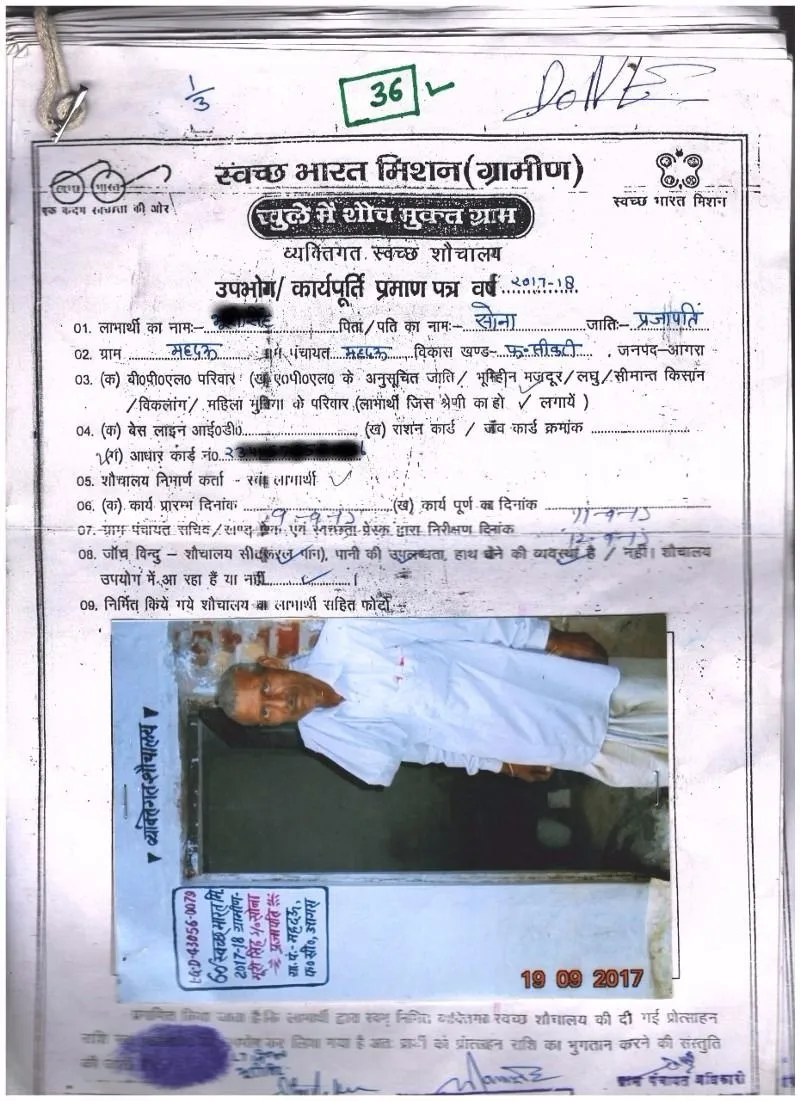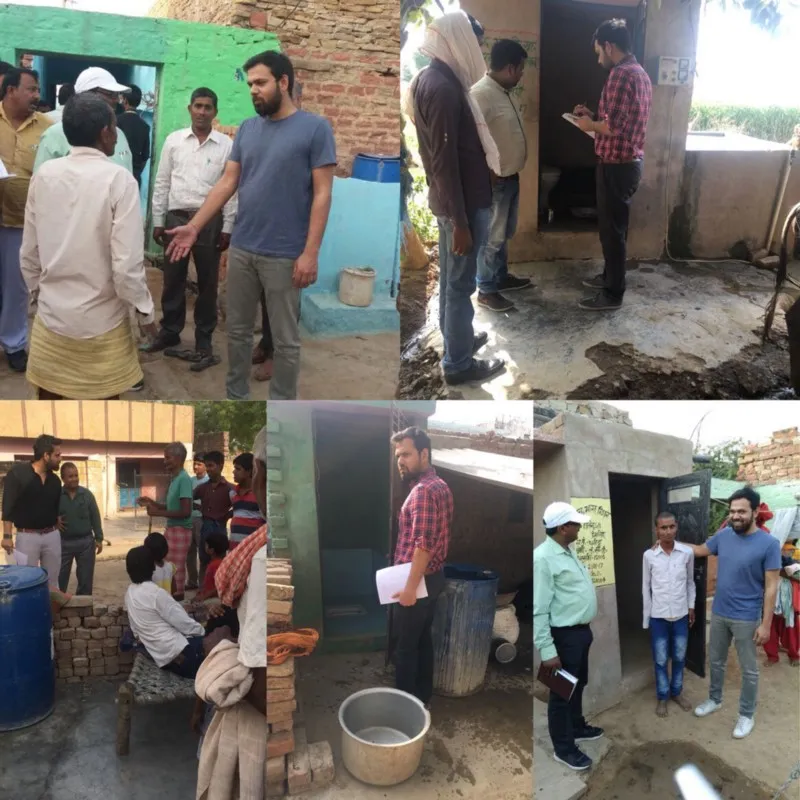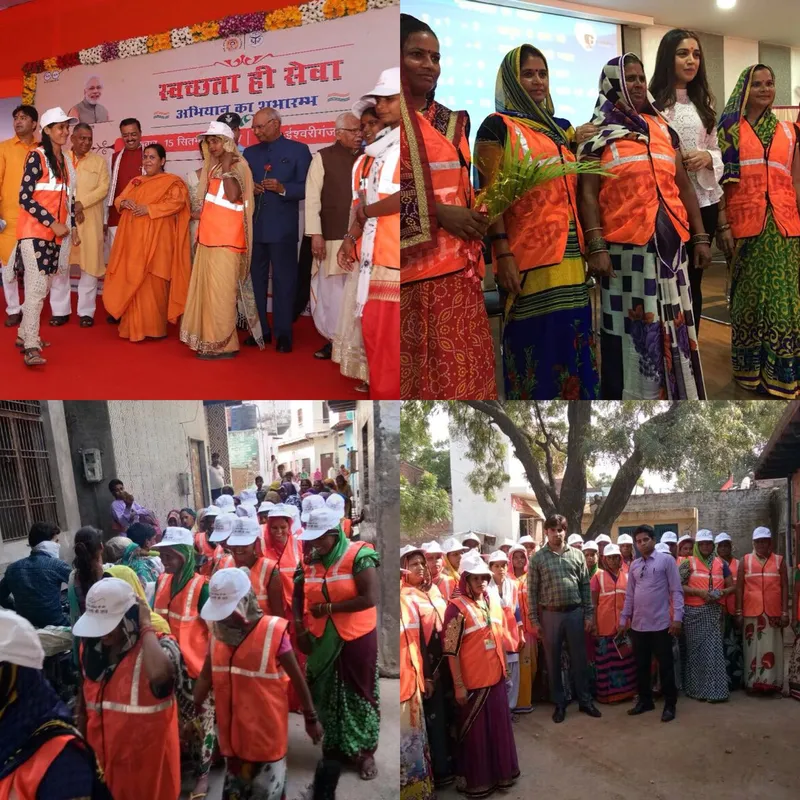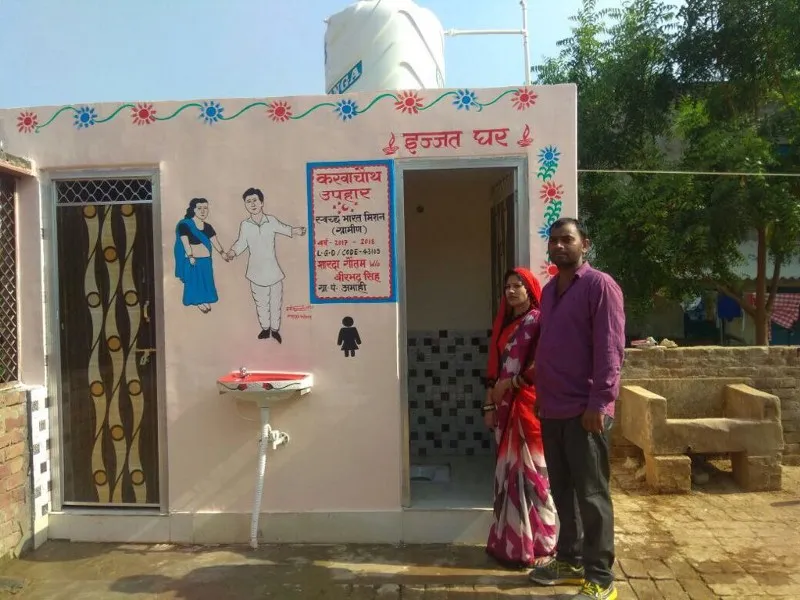6 ways to implement Swachh Bharat Mission in a district to make villages open defecation free
Swachh Bharat Mission was initiated by Prime Minister Narendra Modi on October 2, 2014, when he resolved to bring about an Open Defecation Free (ODF) India by October 2, 2019. The task ahead was not just to build toilets, but to bring about the requisite behavioral change among the community towards open defecation. Given the stipulated timeframe as Zila Swachh Bharat Prerak (#ZSBP) various measures, activities, system and processes were implemented in districts Agra and Kanpur Nagar of Uttar Pradesh to achieve the desired results.

1. Efficient fund flow system- Direct Beneficiary Transfer (DBT)
In DBT, the toilet incentive fund of Rs 12,000 was directly transferred to the beneficiary’s account in two equal installments of Rs 6,000 for the construction of IHHL (Individual Household Latrines), where the first disbursement happened on construction of twin pits with Swikriti Patra (Agreement Letter) to the District Panchayat Raj Office.

The second happened when the toilet is fully constructed, painted and LGD (local government directory, code to uniquely identify a toilet) has been marked with Karya Purti Patra’ (work completion form) to the same.

For fund transfer, the list of beneficiaries is sent to the bank in the bank’s desired format. The bank sends back various status reports such as failure and liquidation report etc., useful to understand the transfer of funds to the beneficiary’s account. This helped smooth fund flow avoiding any kind of financial discrepancies.
2. Capacity building
- Community Led Total Sanitation (CLTS) workshops: Trainings were conducted to train ground-level motivators for working in SBM and were further deployed in villages as triggering teams to sensitise and trigger the emotions of the community towards sanitation.
- Training to Safaikarmis, Rozgar Sevaks, and SHGs on various aspects of SBM to involve a larger workforce for the mission as ‘Swachhta Doot’/’Swachhagrahi’.
- Mason trainings: Number of masons to be deployed in each village were estimated to make it ODF in stipulated time against the compressed demand of the village. The numbers of trained (on Twin-Pit technology) masons were increased by on-site mason training, and were further deployed at each gram panchayat (GP), where these masons trained other masons to create a big force of trained masons. On an average one mason can build one toilet in five days.

3. Monitoring through war rooms
The progress of every GP was monitored at district and block level ODF war rooms against the compressed demand generated from each .
Compressed demand = (Total Families in GP) - (Families with IHHL) - (Families financially capable to build their toilet)

ODF war room is a fully functional room for coordinating, implementing and real-time monitoring of daily activities of SBM at the district and blocks. Block war rooms were initiated in Kanpur and Agra to decentralise the information-sharing and monitoring procedure of ground level activities to make an ODF district. It includes daily calls to the stakeholders and status update on WhatsApp groups via photos of ground activities.
4. CLTS approach
The mission was implemented effectively by involvement of community by empowering people in the community. Following a model of incentivising and appreciating helped create a big motivated workforce to work for the mission.
Nigrani Samiti: It is a 30-member team (10 kids, 10 women, 10 adults) from each village who were asked to do regular morning and evening follow-ups at places where people usually go for open defecation. They were empowered by giving a proper vigilance tool kit that has a whistle, torch, cap and jacket.

Swachhagrahi: One person who leads the Nigrani Samiti in a village is trained on CLTS and was given ownership to make their village ODF and has been termed as Swachhagrahi. Their progress was reviewed at block and district level through ODF war rooms. They are awarded a sum of Rs 10,000 in two equal instalments- Rs 5,000 when the village is declared ODF and other Rs 5,000 after six months of ODF sustenance.
5. Weekly review meeting of different stakeholders by district magistrate
For implementing a scheme like SBM, it is important to involve the highest order of district administration extensively. Hence, a weekly review meeting of pradhans, secretaries and Swachhagrahi of each village with ADO(P) and BDOs was initiated, which was headed by the district magistrate. This inflicted a sense of pride and importance in them and helped in accelerating the on-ground progress.
6. High impact campaigns and Information, Education and Communication (IEC) activities
IEC activities and campaigns are very impactful and ensure sustainability, since they trigger the emotions of people, thereby bringing about a sense of competition leading to behavioural change, which is the soul of the mission. The following IEC activities were carried out:
1. Pati №.1 Campaign, Agra
On the occasion of KarvaChauth husbands who gifted toilets to their wives under the campaign were awarded by the DM and were tagged as ‘№1 Husbands’ of the district.

2. Promotional activities
Launch of sanitation book and book stickers, Kanpur:
Kanpur Nagar became the first district in UP to implement sanitation as a subject in primary schools by introducing a book on sanitation and was included in examinations too.
“I could feel the impact when I asked a student about the book, and he said ‘padhega ,badhega india, jab swastha banega India.” - Aishwarya Mishra, ZSBP, Kanpur Nagar
Painting, filmmaking, essay writing competitions were organised in all government schools and selected students were awarded by Modi on October 2, 2017.

Wall Painting on toilets and public infrastructure proved to be effective IEC as it helped trigger the emotions and helped create a long-lasting impact on the community.
Sanitation van- Motivational audio and visual content on sanitation is played on LED screens of the van along with street plays (Nukkad Natak) in each GP.
Swachh sports week in Agra was organised for all government schools in the district to promote awareness among children who do not have toilets.
Disclaimer: The views and opinions expressed in this article are those of the authors and do not necessarily reflect the views of YourStory.







